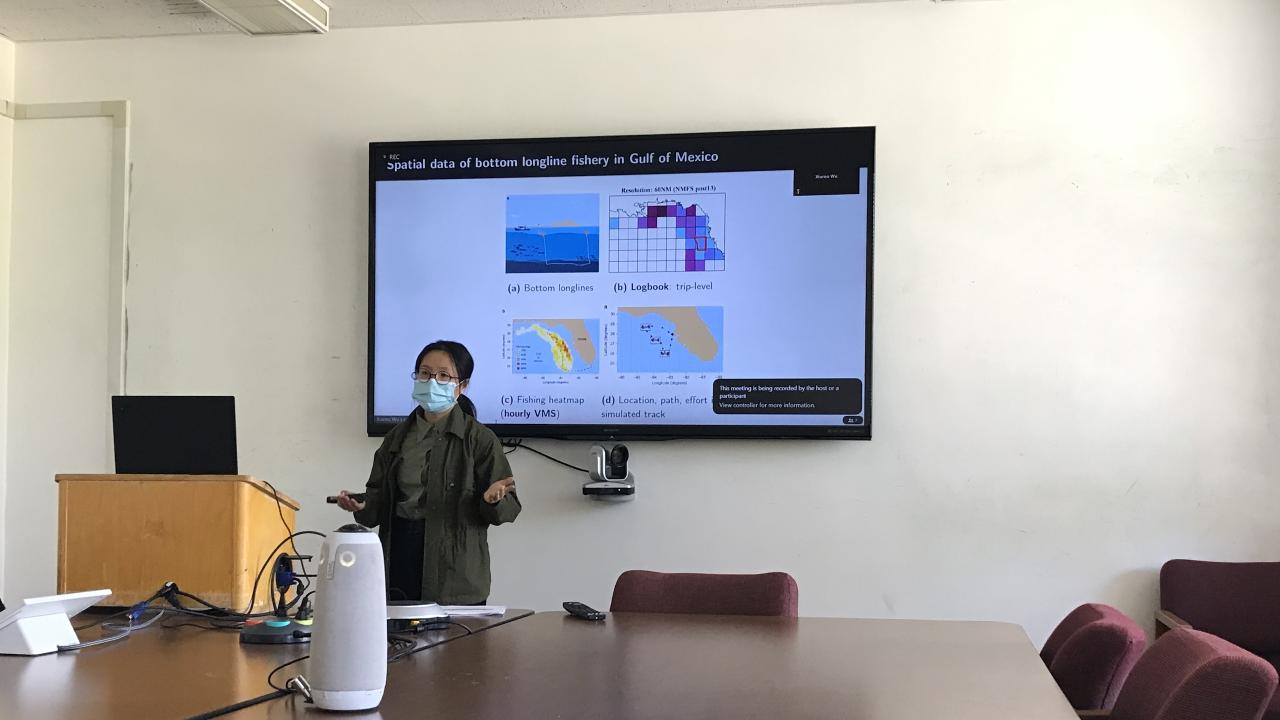
Lab Seminar - Technology constraints determine allocation of fishing effort across space
Xiurou Wu presented her work modeling how fishers choose to allocate fishing effort across space. Understanding how these decisions are made is useful for fisheries management because it can help policymakers assess the potential heterogenous biological and economic impacts of spatial management strategies like marine protected areas. Prior work on this topic has modeled fishing location choice as independent from other decisions fishers make when planning a trip, such as how much effort to allocate to each location they visit and when to return to port. However, these decisions are interconnected, depending on technological constraints such as the fuel and hold capacity of the vessel. Xiurou used a simulation study to show how accounting for these technological constraints would change how fishers allocate fishing efforts across space. She finds that technology constraints endogenously determine the trip length. These constraints also impose a shadow price that affects the individual fisher’s choice of location and effort from the outset of a trip. Xiurou also compares these optimal spatial patterns with those from a myopic fisher and a partially myopic fisher, where the former makes one choice ahead decisions and for the latter, different levels of forward-looking choices are considered (2, 3, and 6 decisions ahead). The myopic fisher does not optimize route planning or consider the technological constraints until it is time to return to port. Both factors result in large reductions in trip profit. The degree of route planning and consideration of technological constraints for the partially myopic fisher depends on the level of forward-looking. Not surprisingly, the more forward-looking the partially myopic the closer it approaches the dynamic optimal.